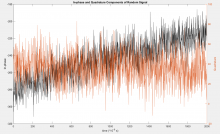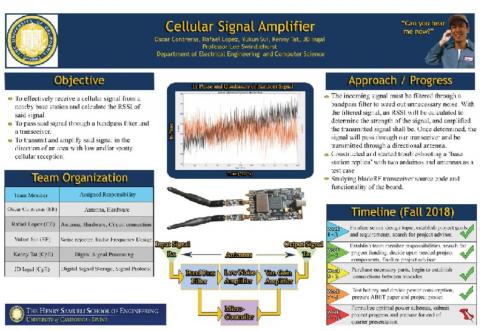Can you hear me now?
Our project involves designing a portable small cell unit that operates at low power and with adjustable bandwidth. The module will be at a size that is small enough to operate at full power and transport to locations such as rural regions, overcrowded areas, and disaster zones.
Going into more detail about the components within the signal booster module, there will be two antennas attached to the module: a receiver and a transmitter. From the receiver, the signal will enter a bandpass filter. The bandpass filter will be designed by us and must be adjustable for selecting the appropriate frequency band for the desired bandwidth. Each cellular network generation (2G, 3G, and 4G) has its own unique bandwidth. We must make sure our BPF and antennas can accommodate such frequencies.
It is important that we know the location of the nearest base station, or the signal strength in the area of testing. If the signal strength emitted from the base station is too high, then we run the risk of damaging any nearby mobile devices if the gain setting in the module is too high. We’ll need to program a microcontroller to read the gain in decibels of the received signal. From their, the microcontroller must decide the appropriate gain for the variable gain amplifier. A variable gain amplifier is necessary for our signal booster. Ideally, we will have to design one that is automated rather than use a potentiometer, which would have to be manually adjusted. An arduino can be programmed to read signal strength using the appropriate libraries that can read signal strength outputted by a bandpass filter.


